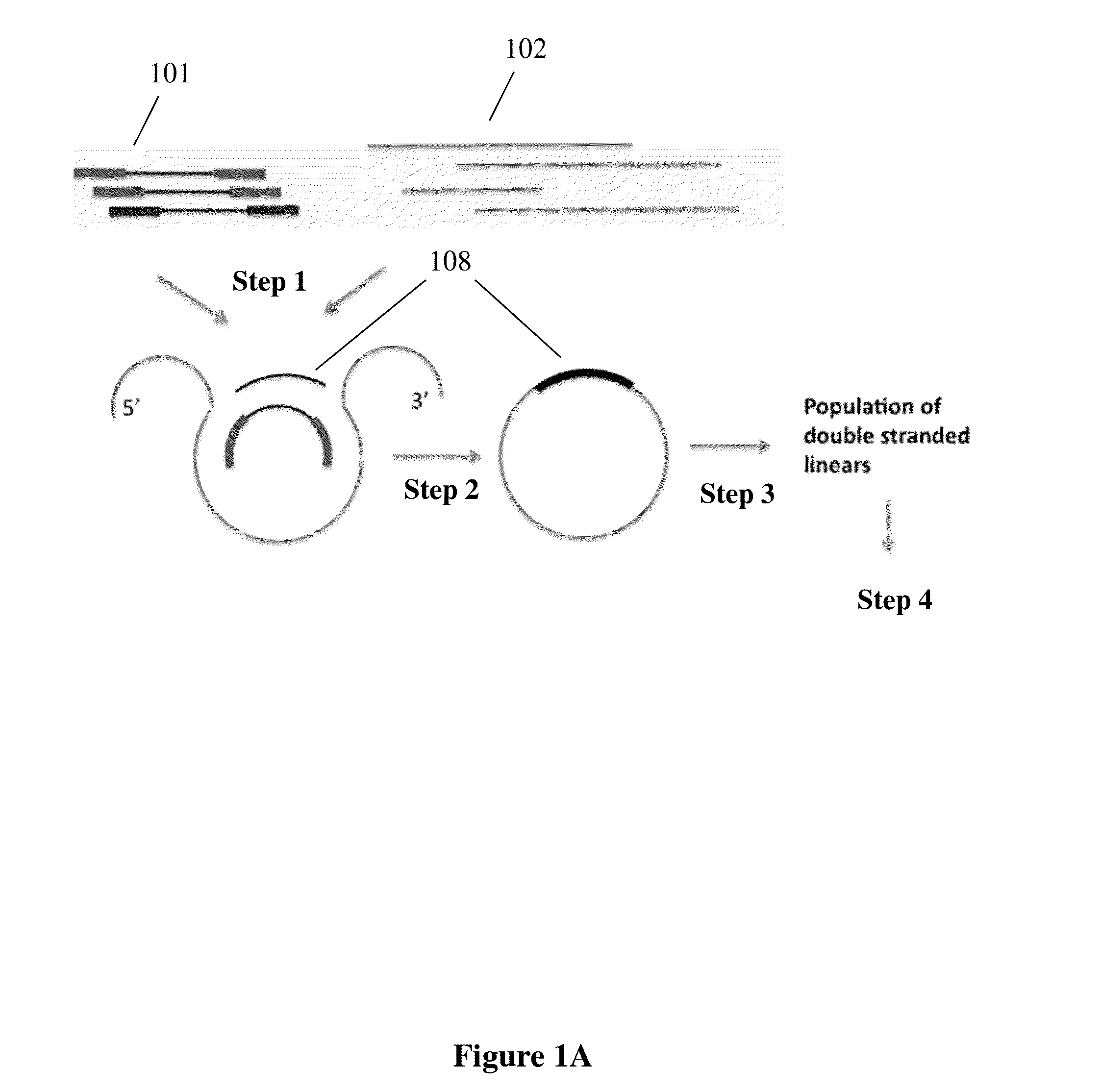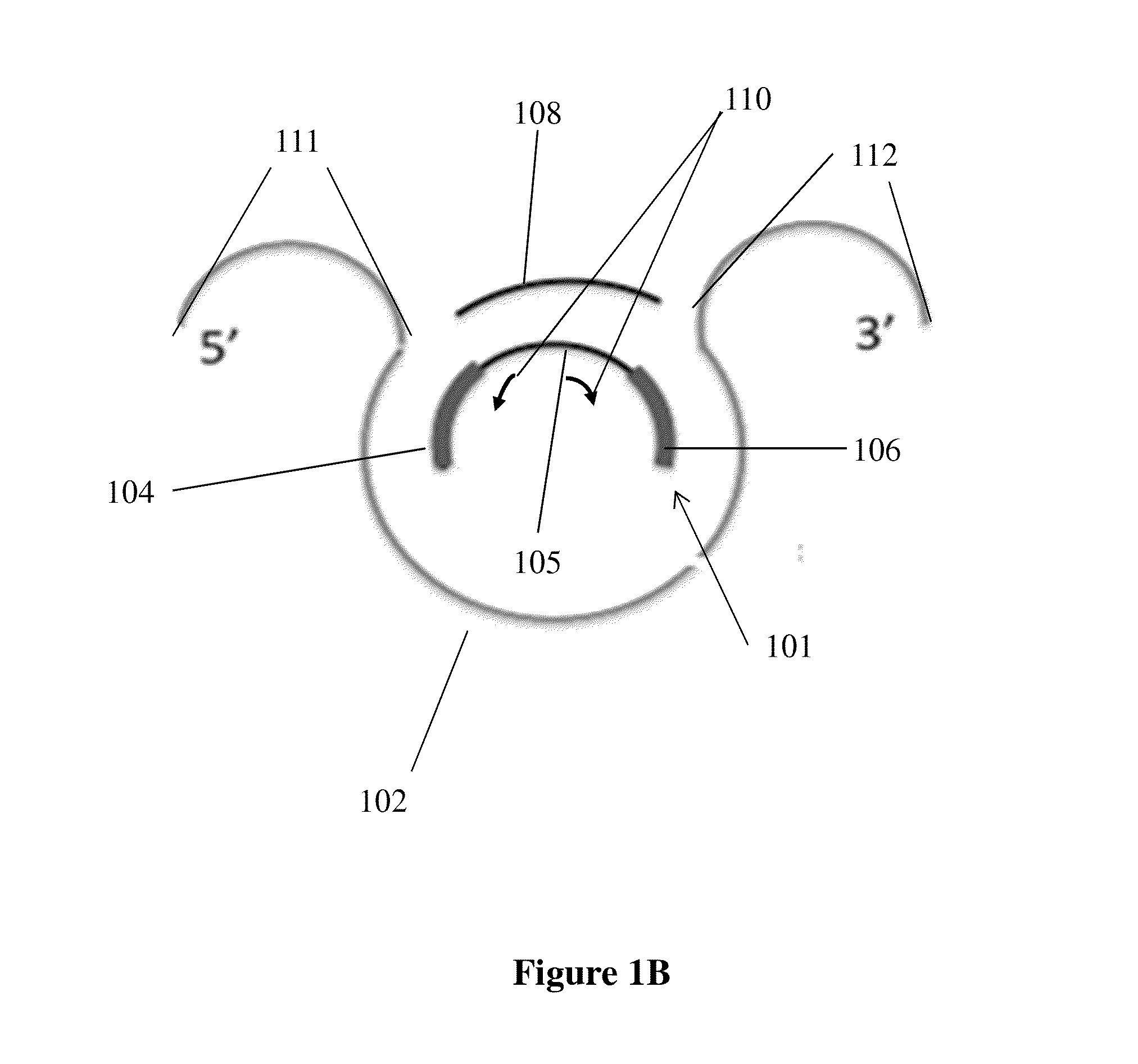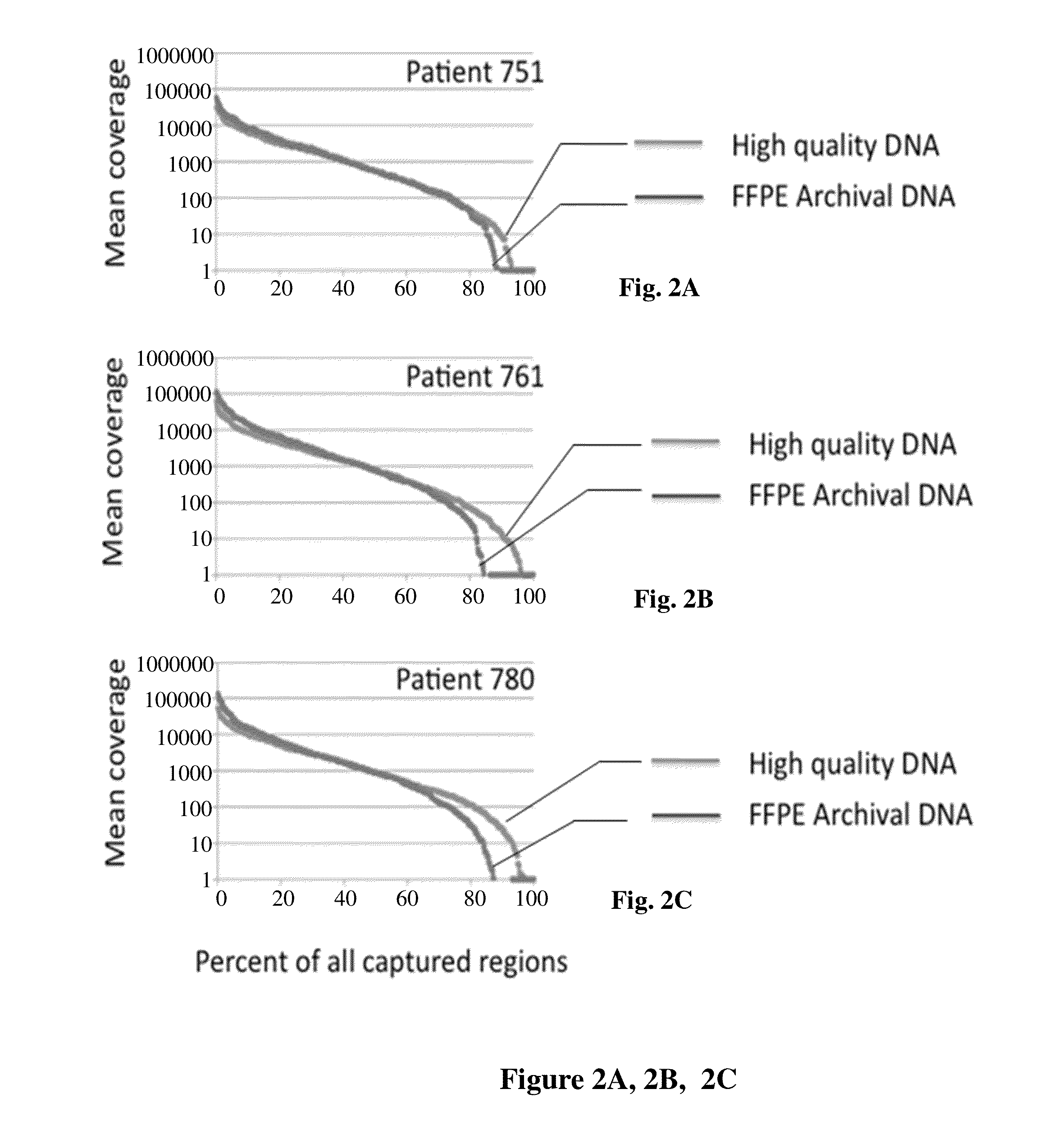Capture probe and assay for analysis of fragmented nucleic acids
- Summary
- Abstract
- Description
- Claims
- Application Information
AI Technical Summary
Benefits of technology
Problems solved by technology
Method used
Image
Examples
example 1
Oligonucleotide Design, Target DNA Capture, and Sequencing
Samples
[0063]Genomic DNA from NA18507 was obtained from Corriel Cell Repositories. Intestinal tissue samples were obtained from under an IRB protocol approved by Stanford University. These samples were either immediately snap frozen in liquid nitrogen and stored at −80° C. or preserved as formalin-fixed, paraffin-embedded (FFPE) blocks. Total nucleic acids were extracted from the flash-frozen tissue using the SQ DNA / RNA / Protein Kit from Omega Bio-Tek. Following complete RNase A digestion, the DNA (herein referred as dsDNA) was analyzed by argarose gel electrophoresis and quantified by a fluorescence assay using SYBR Gold (Invitrogen). For FFPE samples, DNA was isolated using the BiOstic® FFPE Tissue DNA Isolation Kit from Mo Bio Laboratories. The quantity and quality of the preparations were by OD260 and qPCR analysis across 3 different genomic loci. Only single stranded DNA (ssDNA) samples with a difference in Ct values of e...
example 2
Assessment of Overall Capture Coverage
[0071]In a proof of principle experiment, we used a set of previously described capture oligonucleotides [9]. Because we had determined that amplicon size was an important parameter for this type of selective circularization, we chose a subset of 628 capture oligonucleotides, each targeting a 150-250 base region. The assay targets a total of 123,982 bases. We compared the yield and the reproducibility of targeting reactions using DNA extracted from either fresh frozen tissue or FFPE blocks of three individuals. Both fresh frozen and FFPE samples are derived from normal colon according to the pathology reports.
[0072]The resulting capture amplicons from matched genomic DNA samples derived from either flash-frozen or FFPE material were concatenated using T4 DNA ligase and mechanically fragmented prior to library preparation. Replicate sequencing was conducted in triplicate to identify sequencing specific errors. The fragmented amplicons ligated to ...
example 3
Evaluation of Sequencing Errors from the Archival Process
[0075]Given that matched samples from normal tissue of the same individual are used, differences between the SNV-calling results between FFPE versus flash-frozen derived DNA is attributable to FFPE-induced damage. Sequencing-related errors were eliminated based on the triplicate resequencing of each sample. As previously published, a straightforward statistical method to identify differences between matched samples which were previously applied to normal tumor pairs [9] was developed. At any given sequence position, the present method imposes that the difference in the second most frequent bases between the two samples exceeds 10% for both forward and reverse strand aligning reads. The 14 datasets were analyzed as seven matched pairs comparing sequence data from matched FFPE versus flash-frozen derived genomic DNA samples. The analysis yielded an average of 10.2 FFPE-specific calls (standard deviation being 4.2) per pair withi...
PUM
| Property | Measurement | Unit |
|---|---|---|
| Temperature | aaaaa | aaaaa |
| Temperature | aaaaa | aaaaa |
| Thermal stability | aaaaa | aaaaa |
Abstract
Description
Claims
Application Information
 Login to View More
Login to View More - R&D
- Intellectual Property
- Life Sciences
- Materials
- Tech Scout
- Unparalleled Data Quality
- Higher Quality Content
- 60% Fewer Hallucinations
Browse by: Latest US Patents, China's latest patents, Technical Efficacy Thesaurus, Application Domain, Technology Topic, Popular Technical Reports.
© 2025 PatSnap. All rights reserved.Legal|Privacy policy|Modern Slavery Act Transparency Statement|Sitemap|About US| Contact US: help@patsnap.com



